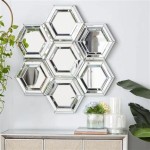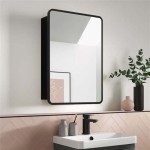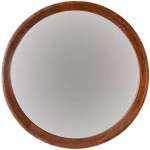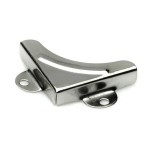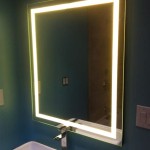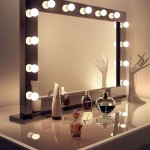The Enduring Appeal of the Silver Standing Mirror
The silver standing mirror, a seemingly simple object, holds a significant place in interior design and personal grooming. Its functionality surpasses mere reflection; it serves as a decorative element, a light amplifier, and a tool for creating a sense of spaciousness. The enduring appeal of the silver finish, coupled with the practicality of a standing design, makes this type of mirror a versatile and sought-after addition to various spaces, from bedrooms and dressing rooms to hallways and even retail environments.
This article explores the various aspects of the silver standing mirror, encompassing its design variations, practical applications, aesthetic benefits, and considerations for selection and placement. The objective is to provide a comprehensive understanding of this popular furnishing and equip readers with the knowledge necessary to make informed decisions regarding its integration into their living spaces.
Design Variations and Materials
Silver standing mirrors are available in a diverse array of designs, catering to different aesthetic preferences and functional needs. The frame, a critical component of the mirror’s overall appearance, can be constructed from various materials, each offering unique characteristics and visual appeal. Common frame materials include metal, wood, and composite materials.
Metal frames, often crafted from steel, aluminum, or wrought iron, are prized for their durability and sleek, modern aesthetic. These frames can be polished to a high shine, powder-coated in various shades of silver or gray, or treated with antique finishes to create a vintage or industrial look. The clean lines and robustness of metal frames make them suitable for contemporary interiors.
Wooden frames offer a warmer and more traditional aesthetic. Hardwoods such as oak, maple, and mahogany are frequently used, offering both strength and beauty. The wood can be stained in various tones, painted in shades of silver or white, or left with a natural finish. Wooden frames can be intricately carved or feature simple, minimalist designs, allowing for versatility in matching different decor styles. Furthermore, the warmth provided by wood can help soften the cool reflectivity of the mirror creating a more welcoming and balanced feel.
Composite materials, such as MDF (Medium-Density Fiberboard) and engineered wood, provide a cost-effective alternative to solid wood. These materials can be easily molded and painted to mimic the appearance of wood or metal, offering design flexibility. While not as durable as solid wood or metal, composite frames can provide a stylish and functional option for those on a budget.
Beyond the frame material, the shape and style of the frame also vary widely. Ornate frames with intricate detailing are well-suited for traditional or vintage-inspired spaces, while minimalist frames with clean lines are ideal for modern or contemporary interiors. The frame can also incorporate decorative elements such as beveled edges, etched designs, or even embedded lighting.
The mirror itself is typically made of glass with a reflective silver coating applied to the back. The quality of the glass and the silvering process directly impact the clarity and reflectivity of the mirror. Higher-quality mirrors provide a more accurate and distortion-free reflection. The mirror may also be beveled for added visual interest.
The stand of the mirror is another critical design element. Some standing mirrors feature a simple easel-style stand, while others have more elaborate bases with storage compartments or decorative accents. The stand must be sturdy and well-balanced to ensure the mirror remains stable and prevents tipping. Adjustable stands allow for customization of the mirror's angle, enhancing its functionality.
Practical Applications and Functional Benefits
The silver standing mirror provides a range of practical applications and functional benefits, making it a valuable addition to various spaces. Its primary function is, of course, to provide a full-length reflection, allowing individuals to assess their appearance from head to toe. This is particularly useful in bedrooms, dressing rooms, and walk-in closets, where individuals prepare for the day or evening.
Beyond its use for personal grooming, the silver standing mirror can also serve as a decorative element, enhancing the overall aesthetic of a room. The reflective surface of the mirror creates the illusion of increased space, making smaller rooms appear larger and more open. This is particularly beneficial in apartments, condos, or any space where maximizing visual space is a priority. By strategically placing a standing mirror opposite a window or light source, it can amplify natural light, brightening up a room and creating a more inviting atmosphere. Dark corners are often significantly improved with the addition of a correctly positioned mirror.
The versatility of the silver standing mirror extends to its ability to complement various decor styles. Whether a space is decorated in a traditional, modern, or eclectic style, a silver standing mirror can be found to match. The silver finish is generally neutral and can blend seamlessly with a wide range of color palettes and textures. This adaptability makes it a safe and reliable choice for interior design.
Furthermore, standing mirrors are inherently portable. Unlike wall-mounted mirrors, they can be easily moved from one location to another as needed. This flexibility allows individuals to experiment with different layouts and arrangements, optimizing the mirror’s placement for both functional and aesthetic purposes. This is especially useful for renters or those who frequently rearrange their furniture.
In retail environments, silver standing mirrors are often used in clothing stores and fitting rooms to provide customers with a full-length view of themselves in garments. The mirror's presence can influence purchasing decisions and enhance the overall shopping experience. The visual appeal of the silver finish can also contribute to the store's overall ambiance.
Another practical benefit is the relative ease of maintenance. A silver standing mirror typically requires only occasional cleaning with a glass cleaner and a soft cloth to maintain its shine and clarity. The frame may require dusting or polishing depending on the material.
Aesthetic Considerations and Placement Strategies
The silver standing mirror offers significant aesthetic benefits, contributing to the overall visual appeal and ambiance of a room. Its reflective surface can create depth and dimension, making a space feel more spacious and inviting. The choice of frame design, the mirror's shape, and its placement within the room all play a crucial role in maximizing its aesthetic impact.
When selecting a silver standing mirror, it is essential to consider the existing decor style of the room. A sleek, minimalist mirror with a metal frame might be well-suited for a modern apartment, while an ornate mirror with a carved wooden frame might be more appropriate for a traditional bedroom. The key is to choose a mirror that complements the existing furniture, colors, and textures.
Placement of the mirror is another critical factor. Placing a standing mirror opposite a window or light source is a common strategy for maximizing natural light and creating the illusion of more space. This placement is particularly effective in smaller rooms or rooms with limited natural light. However, it is essential to consider the reflections that will be created by the mirror. Avoid placing the mirror in a location where it will reflect unsightly views or create distracting glare.
Another effective placement strategy is to position the standing mirror near a focal point in the room, such as a fireplace or a piece of artwork. This can help to draw attention to the focal point and create a sense of visual harmony. The mirror can also be used to reflect a decorative arrangement, such as a vase of flowers or a collection of sculptures, adding depth and interest to the room.
The size of the mirror should also be carefully considered in relation to the size of the room. A large standing mirror can overwhelm a small space, while a small mirror can get lost in a larger room. A general rule of thumb is to choose a mirror that is proportional to the size of the wall or area where it will be placed.
The height of the mirror is also an important consideration. A full-length mirror should be tall enough to allow individuals to see their entire reflection. However, it should not be so tall that it overwhelms the space or creates an awkward visual effect. Standing mirrors with adjustable heights provide more flexibility in positioning. When considering height, keep in mind average ceilings and the height needs of those using the mirror.
Finally, consider the impact of the silver finish itself. Silver is a cool, neutral hue that can add a touch of elegance and sophistication to a room. However, it can also feel cold or sterile if not balanced with warmer colors and textures. Consider pairing the silver mirror with warm wood tones, soft fabrics, and inviting lighting to create a more balanced and welcoming atmosphere.
By carefully considering these aesthetic considerations and placement strategies, individuals can effectively use a silver standing mirror to enhance the beauty, functionality, and overall ambiance of their living spaces.

Standing Mirror 40 X 140 Cm Silver Torcy Beliani Nl

Edge Silver Standing Mirror Crate Barrel

Standing Mirror 50 X 156 Cm Silver Beauvais Beliani Nl

Huge Paris Silver Chrome 100cm X 200cm Leaner Ornate Antique Mirror Free Standing Sweden

Silver Full Length Vintage Freestanding Cheval Mirror Flora Furniture

G961420 Cheval Floor Mirror Silver Reecefurniture Com

Empire Art Direct Moderno Silver 64 X 18 Inch Floor Mirror Mom C20813 6418 Bellacor

High Low Silver Solid Wood Floor Mirror 32x68

Baroque Silver Freestanding Rectangular Framed Mirror By Kare Design

Bevelled Freestanding Beaded Cheval Mirror 56cm X 168cm Flora Furniture
